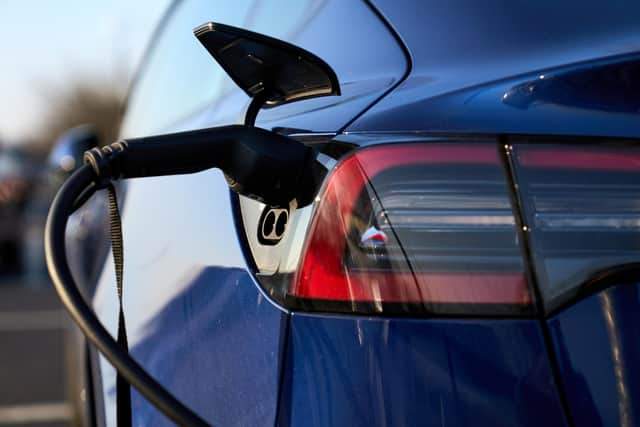New DVLA figures show more Dacorum drivers switching to low-emission vehicles
and live on Freeview channel 276
More drivers in Dacorum are switching to low-emission vehicles, new figures show.
The data comes as cities look to introduce penalties for drivers whose cars contribute to polluting the atmosphere.
Advertisement
Hide AdAdvertisement
Hide AdBut the RAC said the high up-front cost of electric vehicles – the most popular low-emission vehicles – are still putting many people off buying them, despite their lower running costs.


New figures from the DVLA show there were 10,440 low-emission vehicles registered in Dacorum as of March 2023 – up from 7,432 the year before, and 1,692 in 2018.
The number is around 10 per cent of vehicles in the district that are officially classified as low-emission.
Designed to emit less than 75g of carbon dioxide from the tailpipe for every kilometre travelled, they include battery electric, plug-in hybrid electric and fuel cell electric vehicles.
Advertisement
Hide AdAdvertisement
Hide AdAcross the UK, 114,000 plug-in electric vehicles and 76,000 battery electric vehicles were registered for the first time between January and March, rises of 13 per cent and 19 per cent respectively on the previous year.
RAC head of policy, Simon Williams, described the increased demand as ‘meteoric’ but is concerned the up-front cost of the vehicles is putting people off.
He said: "For this reason, we’d like to see the Government do more to sustain new electric car sales, specifically by reintroducing a form of the previous plug-in car grant aimed solely at cheaper electric models to tempt people away from petrol and diesel models.
"For those who regularly make longer trips or who will never be able to charge an electric car up cheaply at home, a cut to the VAT rate at public chargers from 20 per cent to match the five per cent levied on domestic would also make going electric an easier choice.”
Advertisement
Hide AdAdvertisement
Hide AdThe figures were released a week before London's high-profile ultra low emissions zone (ULEZ) expanded to cover all London boroughs. Anyone driving a non-compliant car, van or motorbike within the zone will have to pay £12.50 a day.
They also come as new data reveals vehicle emissions-based schemes have generated more than £418 million in fees and penalty charges in England since March 2001.
Figures obtained by car manufacturer Peugeot show London's ULEZ accounted for £320 million of this, with the remainder split between schemes in Birmingham, Bath, Bradford and Portsmouth.
The Transport Act 2000 requires local authorities in England to reinvest any earnings from clean air zones into the ‘delivery of local transport policies’.
Advertisement
Hide AdAdvertisement
Hide AdA Department for Transport spokesperson said the Government and industry had supported the installation of over 45,000 public charging devices, and stressed plug-in grants would continue for taxis, motorcycles, vans and trucks for at least another year.
They added: “We’ve already put more than £2 billion into helping the transition to electric vehicles, and are investing over £381 million to help deliver local charging infrastructure so people around the country can switch.
“The Government continues to support uptake of these vehicles through a range of tax measures, with industry figures finding plug-in vehicles accounted for nearly a quarter of new car sales in July.”